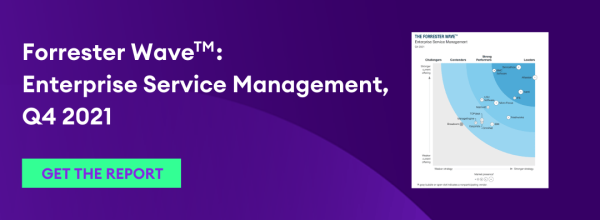When Edwin Land, co-founder of Polaroid said, “Someone is going to make your product obsolete. Make sure it’s you,” he knew what he was talking about.
It’s an immutable truth of business. But it has never been more important than today.
5m read
Hyperinnovation
Innovation is getting faster. Globalization means anybody, anywhere can compete with you. Steady, incremental improvements don’t cut it anymore. What’s needed is constant reinvention.
In response, innovations in the way organizations innovate (such as Agile, Sprints, DevOps automation, big data analysis and AI) have pushed hard on the gas pedal. Innovation is driving innovation. If you think digital disruption is happening fast right now, watch what happens next. The World Economic Forum says 70% of the value created in the next decade will be digitally driven. What does this mean? Most of the value created in the future will be enabled by the digital, not the physical. Marc Andreessen was right when he said, “Software is eating the world”.
It makes sense. The physical world is limited. The digital world is unlimited. When you apply different combinations of AI, IoT, big data, social media, and other digital capabilities to what your organization does (and how it does it) there are a million possibilities to do something new and better for your customers. Even the most traditional physical products can be wrapped-up in digital services to add value for customers.
Competition and disruption
So, what does this mean to you? It means you’ll face more aggressive competition. If you’re not reinventing your products, services, and business models, someone else is. This isn’t an off-horizon threat to consider in a year or two; it’s happening now. It’s out of sight until it’s right on top of you.
Digital-driven business models, like Amazon and Uber have already disrupted unsuspecting industries. Many organizations thought they were safe because of their size or brand loyalty. Here’s the newsflash. Having 50,000 employees doesn’t protect you from anything. Having global brand recognition like Blockbuster or Kodak doesn’t protect you from anything. Agility is now the only guarantee of future survival.
Automate for agility
If you want to be more agile, there’s no room for manual work anymore. If it can be automated, it must be automated. Customers expect results at digital speed. That means instantly. Any process that relies on people is too slow to meet modern-day expectations.
Meanwhile, inside your organization, if your people are tied up with routine daily work, they’re not working on conceiving and creating what’s next for your industry. Automation takes the strain off your people, so they have the time and energy to focus on building the future of your organization—the products and services your customers want next (even if they don’t know it yet). To do this, you need to sweep all of the routine work out of the way. Hyperautomation is the key to hyperinnovation.
ESM drives agility
So where does Enterprise Service Management (ESM) fit in? Automating the work your people do today is the way to clear the path for what needs to happen next. While your organization suffers from the drag of admin work, there won’t be time for much else. You’ll be spinning your wheels while your competitors are working on making your products and services obsolete.
ESM technology like IFS assyst reduces the drag of admin work by letting people quickly automate work across your organization—spanning IT, HR, Facilities, Finance, or any other team that provides value to customers and employees. Simple, drag-and-drop workflows automate manual processes—changing what your employee’s day looks like and creating the time to build the new digital business models that will redefine your industry. Workflow automation shrinks innovation timelines by amplifying your capacity to work on new projects. Automation isn’t just a force multiplier, it’s an innovation multiplier—so long as you use this new capacity wisely.
But that’s not all. By connecting applications and components across your organization, ESM enables the creation of new digital services at light speed. All you have to do is decide what value you want to create, and then orchestrate the moving parts within IFS assyst to create that value. Then you can actively manage demand and performance across all your service automations in one place. Think of ESM as the glue that joins the dots between different parts of your business, and then automates the processes, end-to-end to ensure customers get what they want, as fast as they need it. Whether it’s using AI to interpret a customer enquiry, pulling data from your ERP tool, or triggering a pick-and-pack order, IFS assyst provides hands-free automation.
When you put these two transformational benefits together—an increase in human creative capacity, and a platform for quick creation and automation of new services—ESM brings the future of your organization closer. It gives you that vital edge on the competition. Enterprise Service Management is a catalyst for acceleration and agility and should be a central part of any organization’s strategy for the future.
Think about how ESM could make 2022 a better year than 2021. Talk to us about how we can help you accelerate digital innovation.
